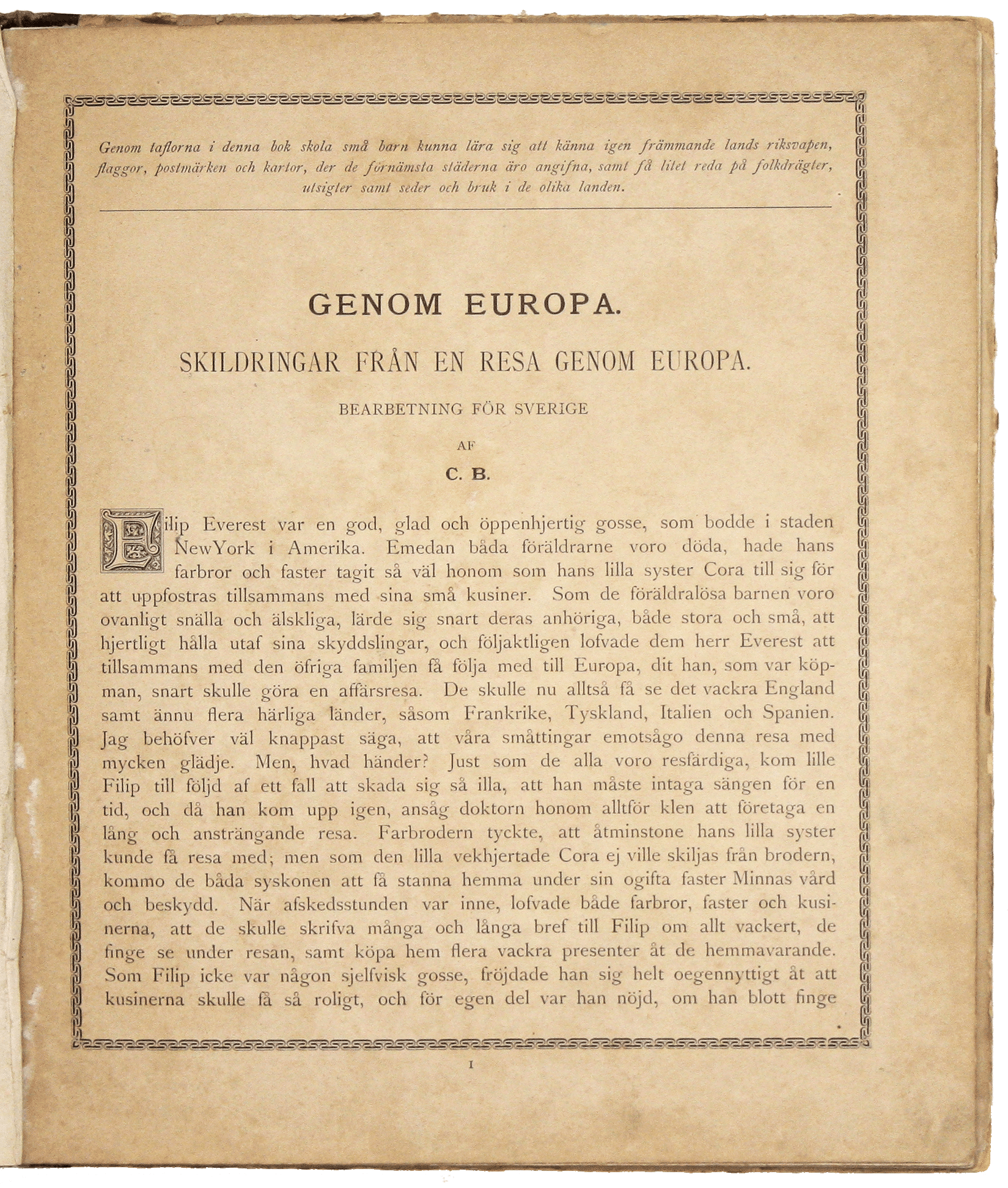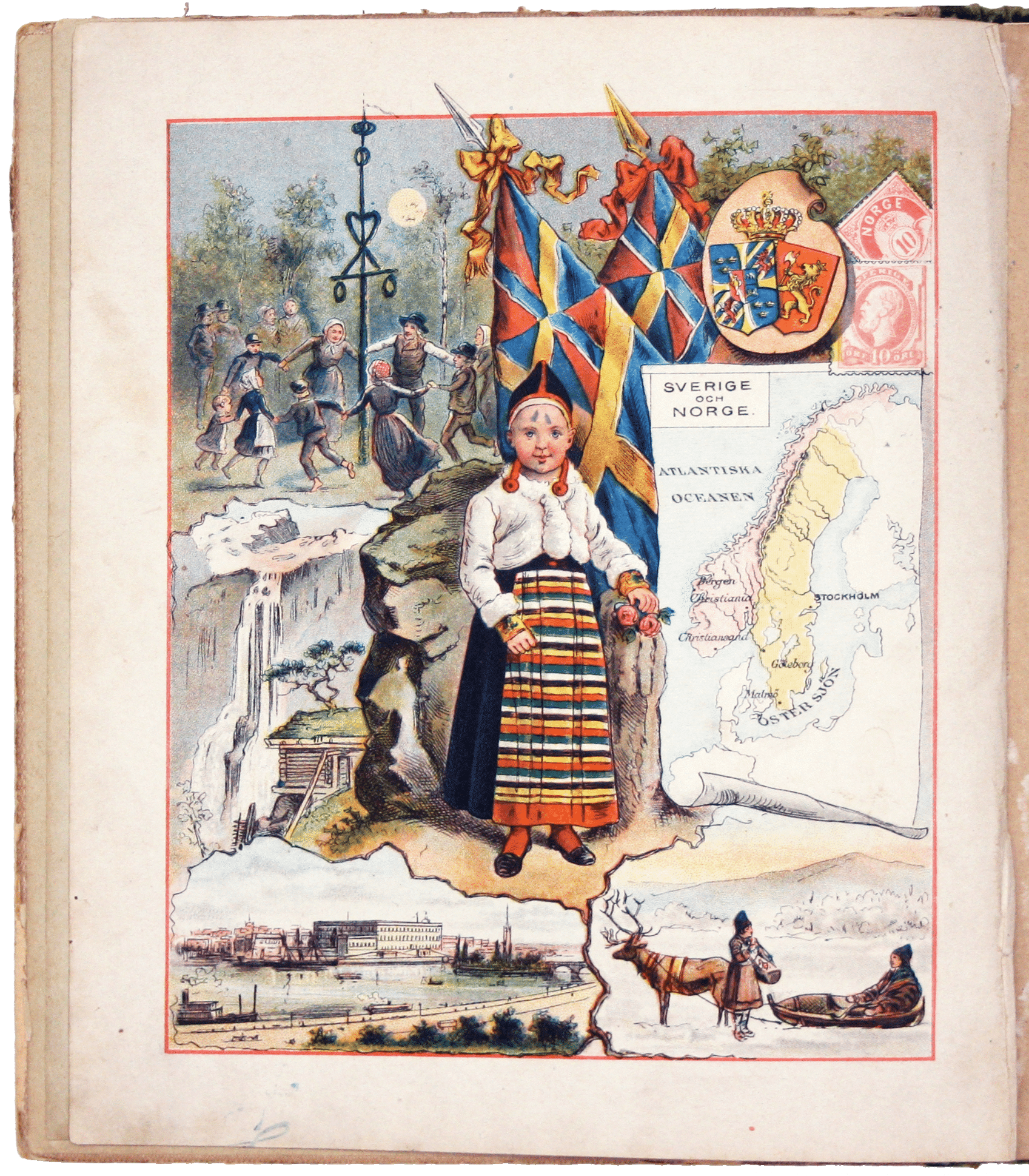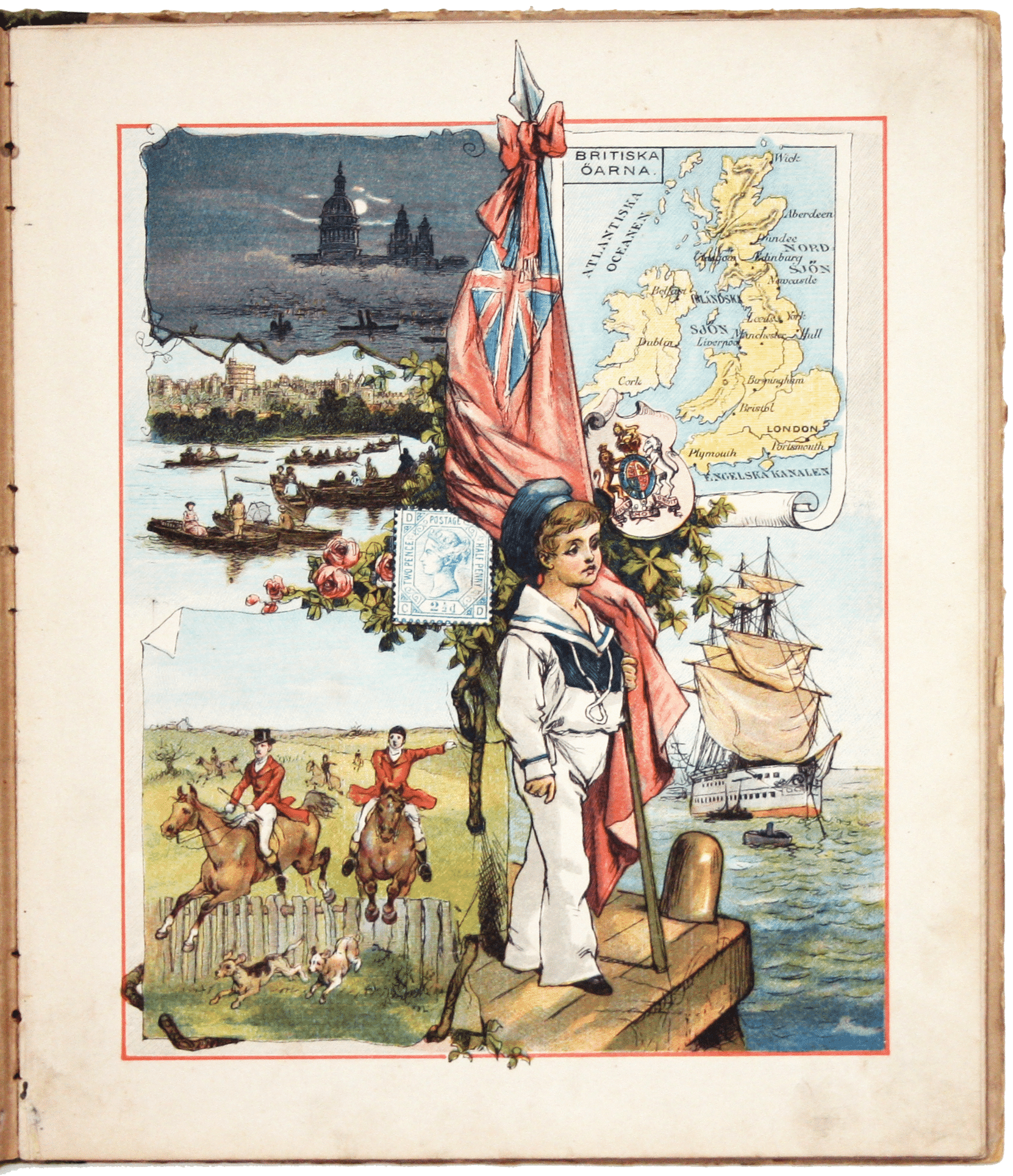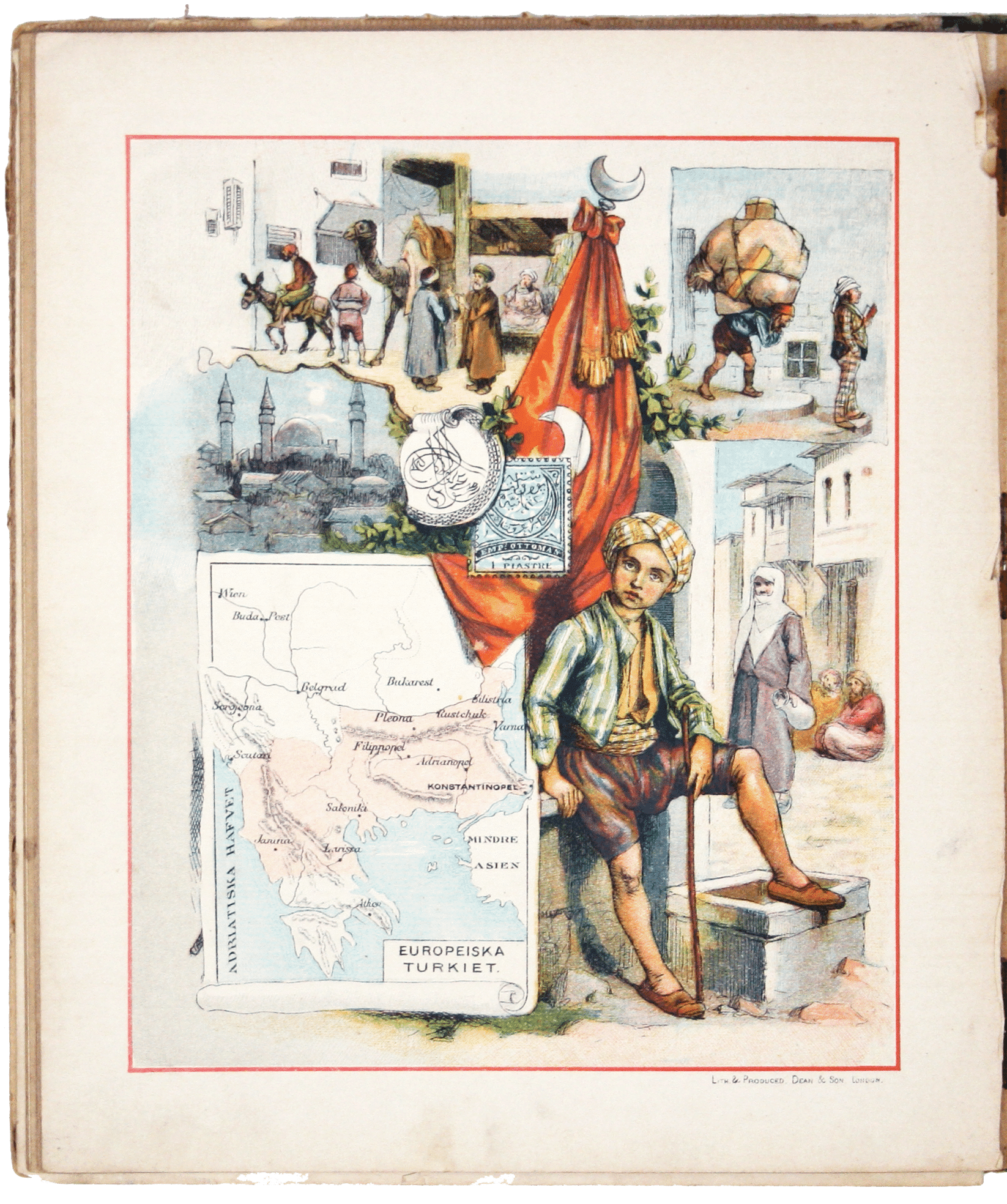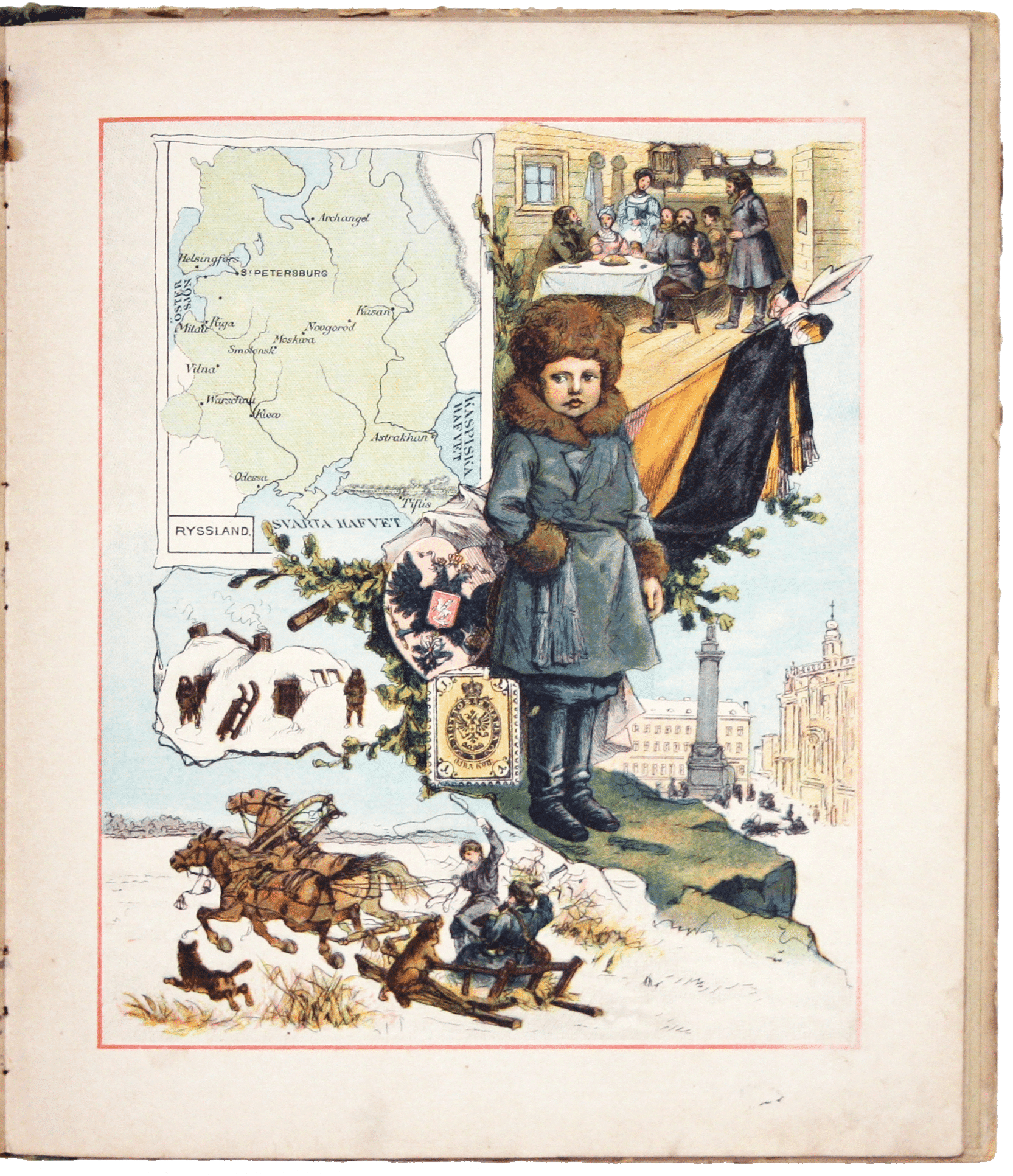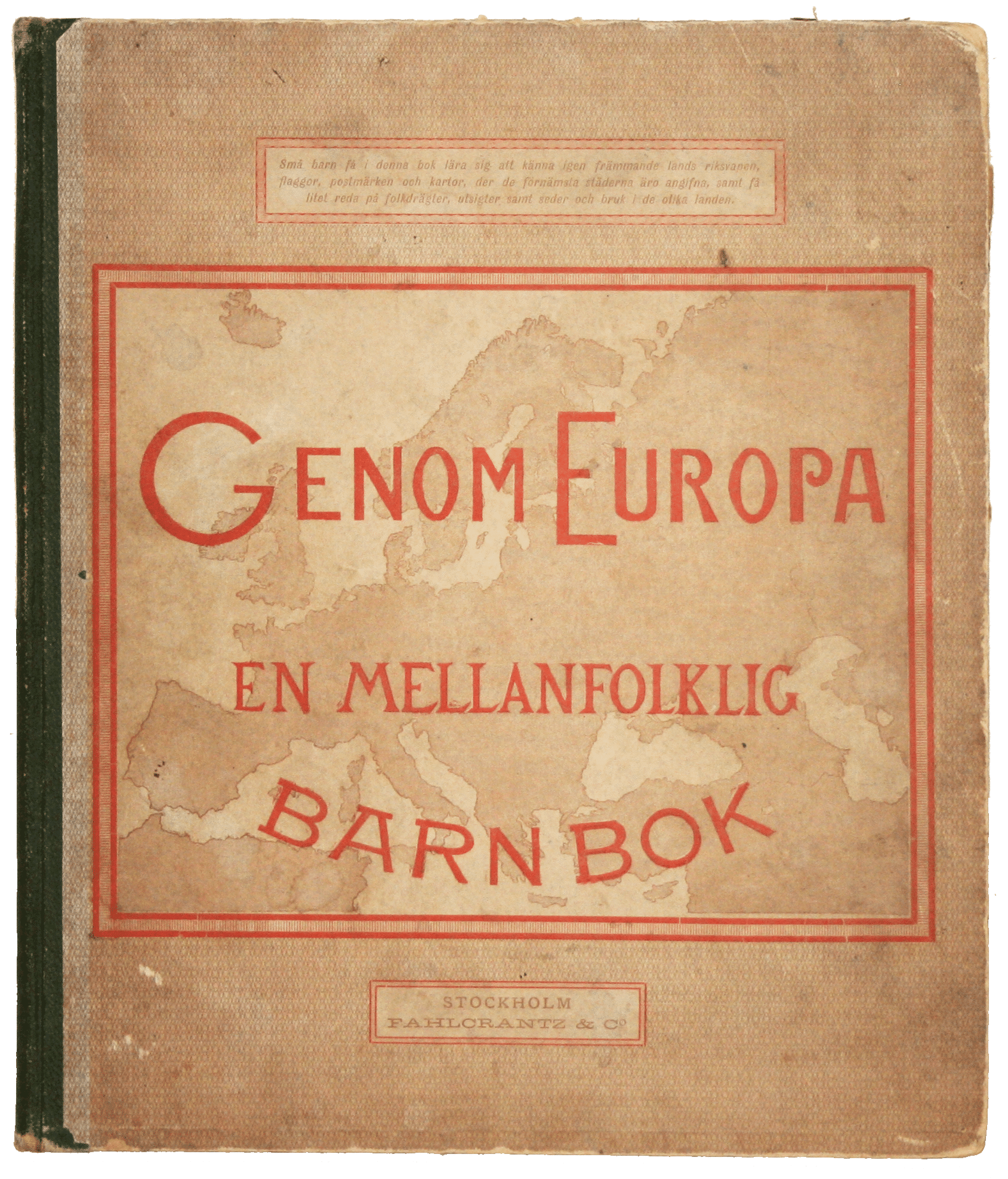
Swedish Children’s Atlas of Europe
SKU: 9341
Title:
Swedish Children’s Atlas of Europe
Date of publication:
Binding:
Publisher:
Author:
The framing device used by this children’s atlas is a little dark: Filip and his sister Cora are orphans, living with their aunt and uncle and cousins in New York City.
Their uncle has to go to Europe on a business trip and the children are to accompany him, but the ever unfortunate Filip is injured and unfit to travel, so the cousins agree to write letters to him from each country they visit – in verse, as that would be more fun (the final letters are sent by Cora from Russia and Filip from Switzerland, so he must have been able to catch up with the family party at some point).
Read more
The plates each incorporate a map, a child or children in characteristic national dress, national coats of arms, flags, scenery and – of course – postage stamps. The scenes on the final plates, Russia and Switzerland, include wolves chasing down a sleigh and a boy attacked by an eagle, so one hopes it ends well for Cora and Filip.
Condition & Materials
Genom Europa en mellanfolklig Barn Bok [cover title]. Stockholm: Fahlcrantz & Co. 1886 [i.e. 1895]. Juvenile atlas of Europe, 24.3 cm tall, pp. 16 + 12 chromolithographed map plates with blank versos, text leaves somewhat browned, stapled rather than sewn with some rust to staples, tan printed boards backed with green cloth, somewhat rubbed and worn. Children’s ownership inscriptions pencilled to end-papers.
References
Clara Romdahl (1852-1927) is identified as the author by the National Library of Sweden; it is not clear if she is the ‘C.B.’ on the first page of text. A pencilled note suggests that the maps may have been adpated from Jean d' Auray’s ‘Le tour d'Europe’ published in Paris by Théodore Lefèvre, circa 1885. However, the only map with an imprint (Turkey) was printed in London by Dean and Son. There is no title page other than the printed cover, but none seems to be called for. Ivar Haegstromms’ imprint at the foot of the final page indicates that the sheets were printed in 1886, but the advertisements on the back cover are dated 1896, so they were still being issued a decade later. Worldcat only reveals two institutional copies: one in the National Library of Sweden (OCLC: 676921518) and one at Princeton (OCLC: 177787807). Read less


